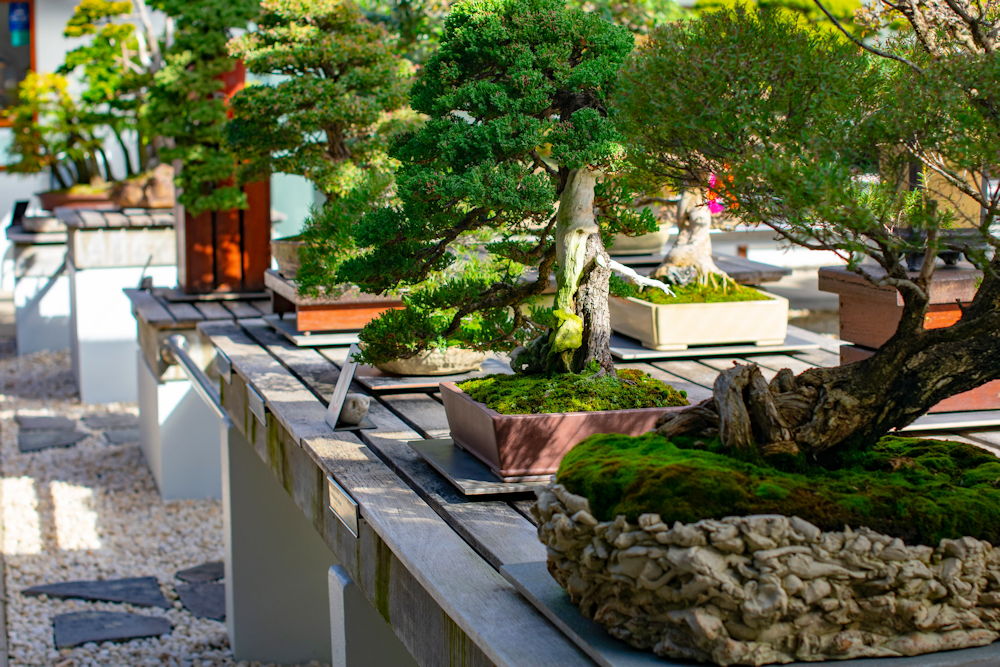Embarking on a bonsai gardening journey can be both exciting and daunting, especially for beginners. But fear not! In this article, we’ll explore five resilient and forgiving bonsai plant species that are perfect for those just starting out, making the art of bonsai accessible and enjoyable for all budding gardeners.
Bonsai gardening can be a rewarding and enjoyable hobby. For beginners, it’s important to choose bonsai plants that are relatively easy to care for and have a forgiving nature. Here are a few species that are considered suitable for beginners:
Chinese Elm (Ulmus parvifolia)
Chinese Elm is a popular choice for beginners due to its resilience and adaptability. It has small, serrated leaves and can tolerate a range of lighting conditions. Chinese Elm bonsai trees respond well to pruning and shaping.

Ficus (Ficus retusa)
Ficus bonsai trees, also known as the “Banyan Fig,” are another excellent choice for beginners. They have attractive aerial roots and glossy leaves. Ficus trees prefer bright, indirect light and need protection from cold drafts.

Jade Plant (Crassula ovata)
Jade plants are easy to care for and have fleshy, round leaves. They are known for their ability to store water, so they are forgiving if you forget to water them occasionally. Jade plants prefer bright light and well-draining soil.

Japanese Juniper (Juniperus procumbens)
Japanese Juniper is a hardy and versatile species that can thrive in a variety of climates. It has dense foliage and responds well to frequent pruning. Junipers prefer outdoor conditions with plenty of sunlight.

Serissa (Serissa foetida)
Serissa, also known as “Snow Rose,” is a small evergreen shrub with delicate white flowers. It requires consistent watering and prefers bright, indirect light. Serissa bonsai trees are ideal for indoor cultivation.
When choosing a bonsai plant, it’s essential to consider your local climate, available space and the level of care you can provide. Additionally, beginner gardeners should also research and understand the specific care requirements of each species to ensure the best chance of success. Regular watering, proper lighting, pruning and repotting when necessary are important aspects of bonsai care.
Remember, bonsai gardening is an art that requires patience and dedication. It’s a gradual process of shaping and nurturing your tree over time. Enjoy the journey and don’t be afraid to learn from your experiences and make adjustments along the way.

Here’s a Summary of the Basics of Bonsai Care
Watering
Bonsai trees require regular watering, but the frequency may vary depending on the species, climate and time of year. It’s crucial to water your bonsai thoroughly, ensuring that the entire root ball is moist. However, avoid overwatering or allowing the roots to sit in standing water, as it can lead to root rot.
Lighting
Most bonsai trees thrive in bright, indirect light. It’s important to find the optimal location for your bonsai based on its specific light requirements. Some species may tolerate full sun, while others prefer partial shade. Observing your tree’s response to light and adjusting its placement accordingly is key.

Pruning and Shaping
Regular pruning is essential to maintain the shape and size of your bonsai tree. Trimming back new growth helps to promote branching and encourages a compact form. Use sharp and clean tools to make precise cuts, and consider the natural growth patterns of the species when shaping your bonsai.
Fertilizing
Bonsai trees require regular feeding to ensure proper growth and health. Use a balanced, slow-release fertilizer or a liquid fertilizer specifically formulated for bonsai. Follow the recommended dosage and application instructions, as over-fertilizing can harm the tree.

Repotting
Bonsai trees should be repotted periodically to provide fresh soil and allow for root maintenance. Repotting is typically done every one to three years, depending on the species and its growth rate. Prune back the roots during repotting to maintain a healthy root system and promote new growth.
Climate and Winter Care
Different bonsai species have specific temperature and climate preferences. Some are best suited for indoor cultivation, while others thrive outdoors. Research the specific requirements of your bonsai species and provide appropriate protection during extreme weather conditions, especially during winter.

Observation and Patience
Bonsai care is an ongoing process that requires observation and patience. Take the time to observe your tree’s growth, health and response to various care practices. Adjust your care routine accordingly and remember that the art of bonsai is a long-term endeavor.
Remember, this is just a basic overview of bonsai care. Each species may have specific care requirements, so it’s essential to research and understand the needs of your particular bonsai tree. Enjoy the journey of nurturing and shaping your bonsai, and don’t be afraid to seek guidance from experienced bonsai enthusiasts or join a local bonsai club for additional support and knowledge.









